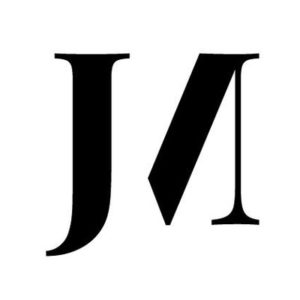After five years’ closure and reconstruction, the Jewish Museum Frankfurt re-opened in October 2020 with a completely new permanent exhibition, inviting visitors to discover the history of Jews in Frankfurt through their traditions and their influence on the city from 1800 to the present day. And this, in an interactive and inclusive way!
The Tactile Studio team was contacted to contribute to the inclusive design of this brand new exhibition: thanks to the creation of tactile and sensory stations as well as tactile orientation maps, the museum is now a welcoming place for all audiences.
Accessibility, interactivity and sensoriality
We created five tactile orientation maps, located at the entry points of each floor and in the corridors in the second part of the building, allowing visitors to discover and understand the narrative itinerary for each exhibition room.
The museum entrusted us to both create and produce a wide range of tactile objects that you will find during your visit. The themes and the objects are very varied, representative of numerous questions touched on by the exhibition (religious objects and their symbolism, famous works of art or important religious scenes).
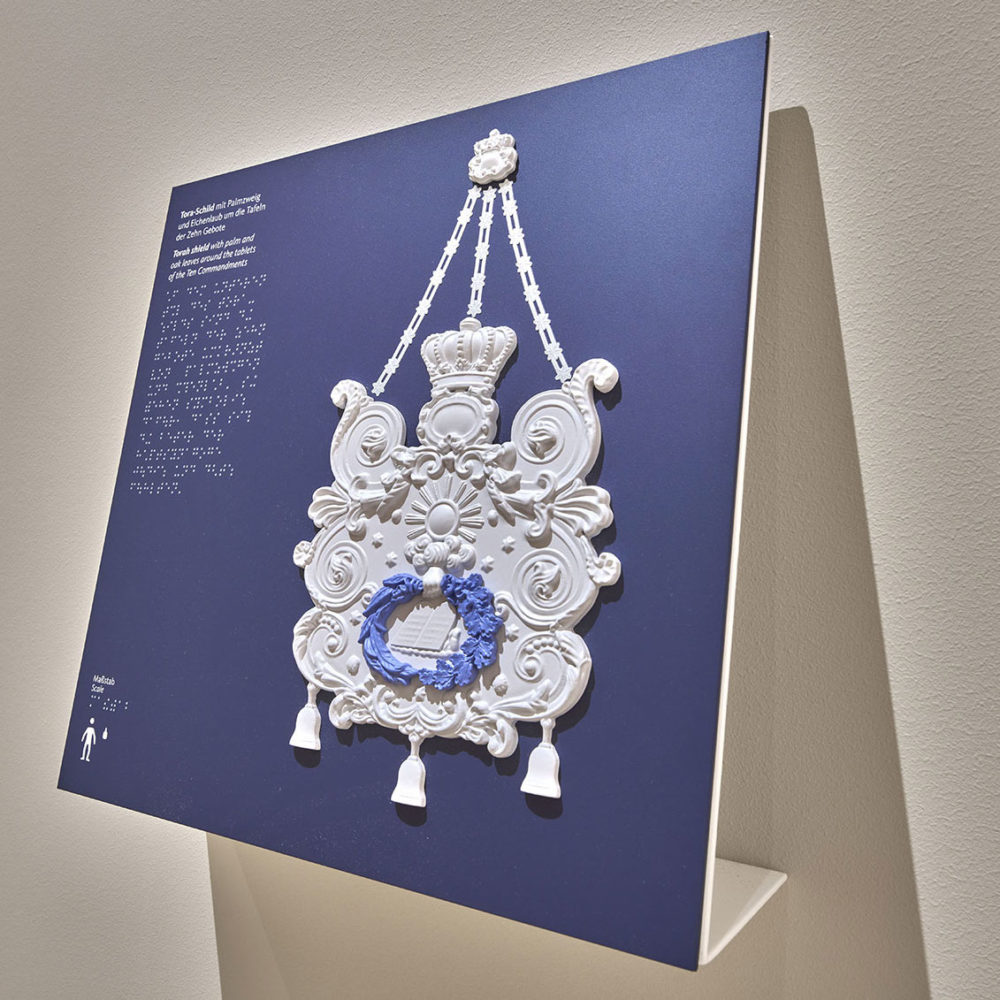
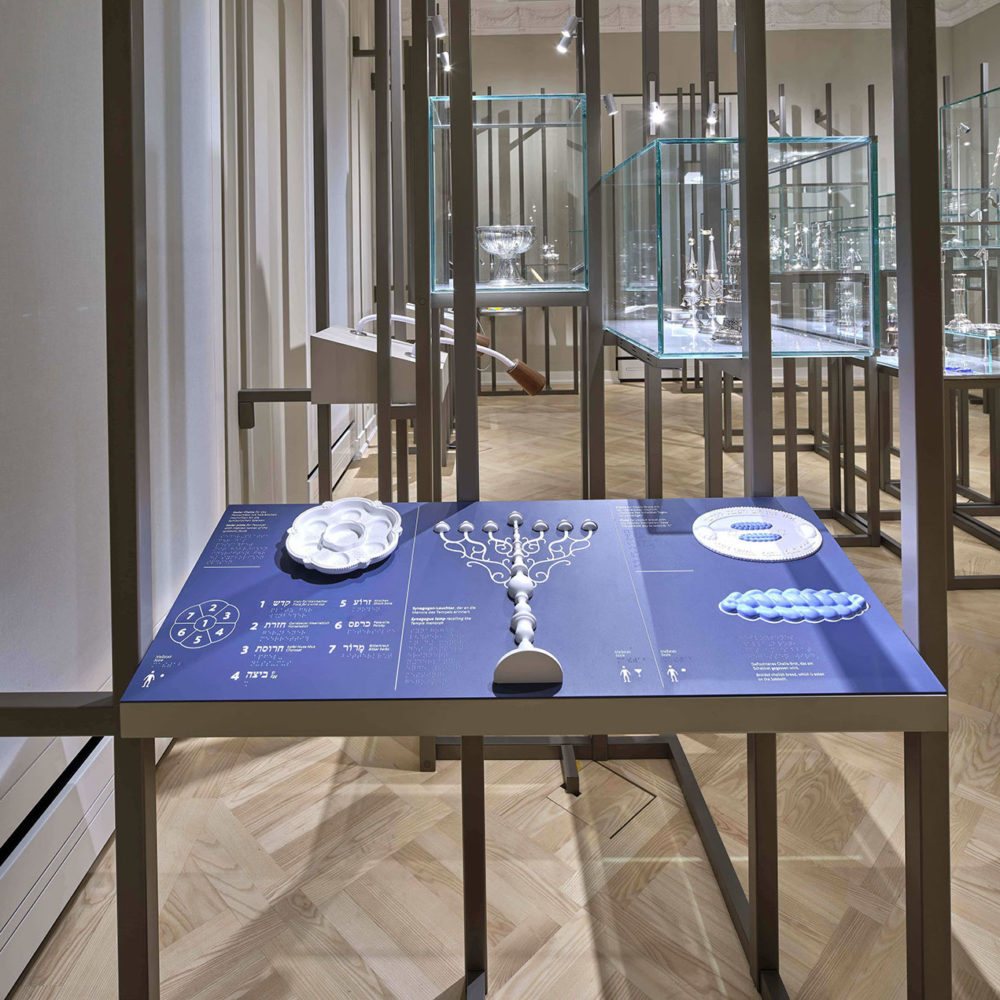
One of our favourite tactile stations presents objects used in performing religious rites. There you will discover the foods making up a Passover Seder dish (thanks to inscriptions on the plate), a large and impressive lamp from a synagogue and a Challah bread plate with inscriptions in Hebrew.
Another tactile station displays the ancestral home of the Rothschild family in Frankfurt as well as the magnificent facade of the Waddesdon manor, built for Baron Ferdinand de Rothschild in the 1870s. Visitors can compare the architectural differences between these two iconic places.
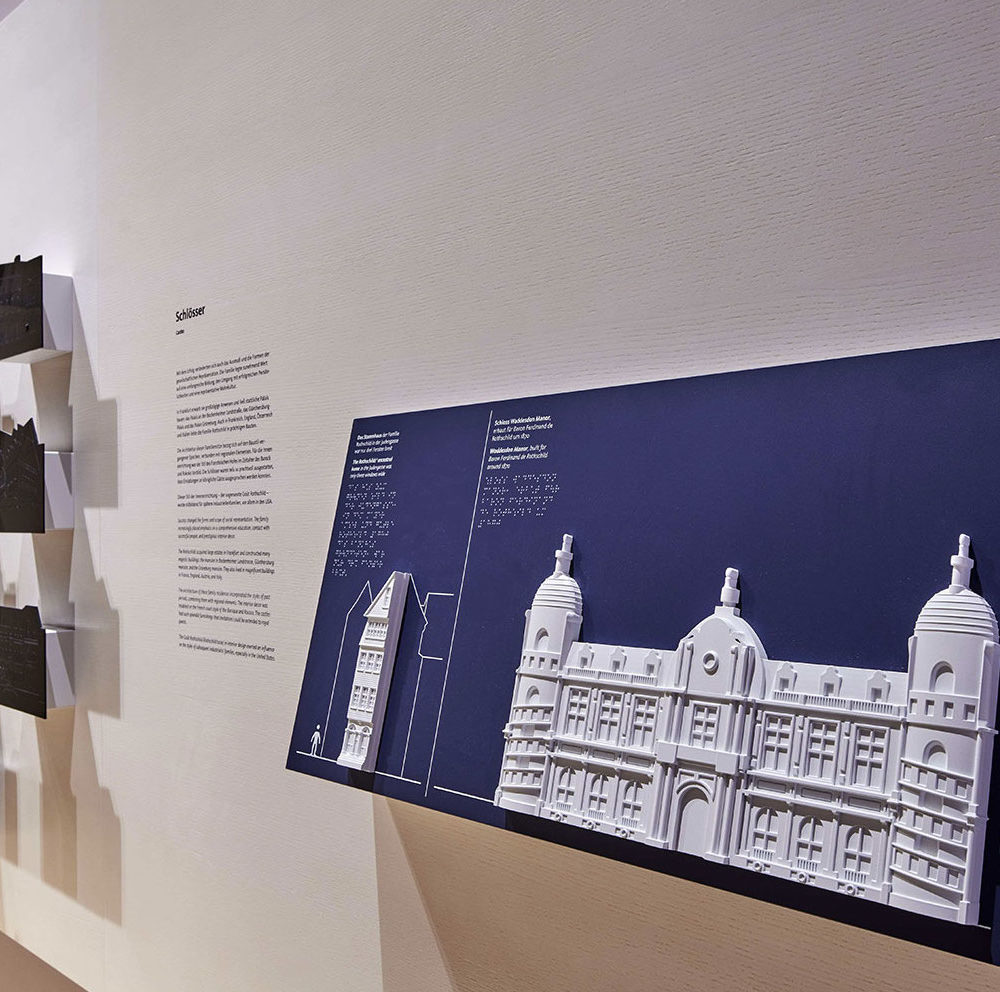
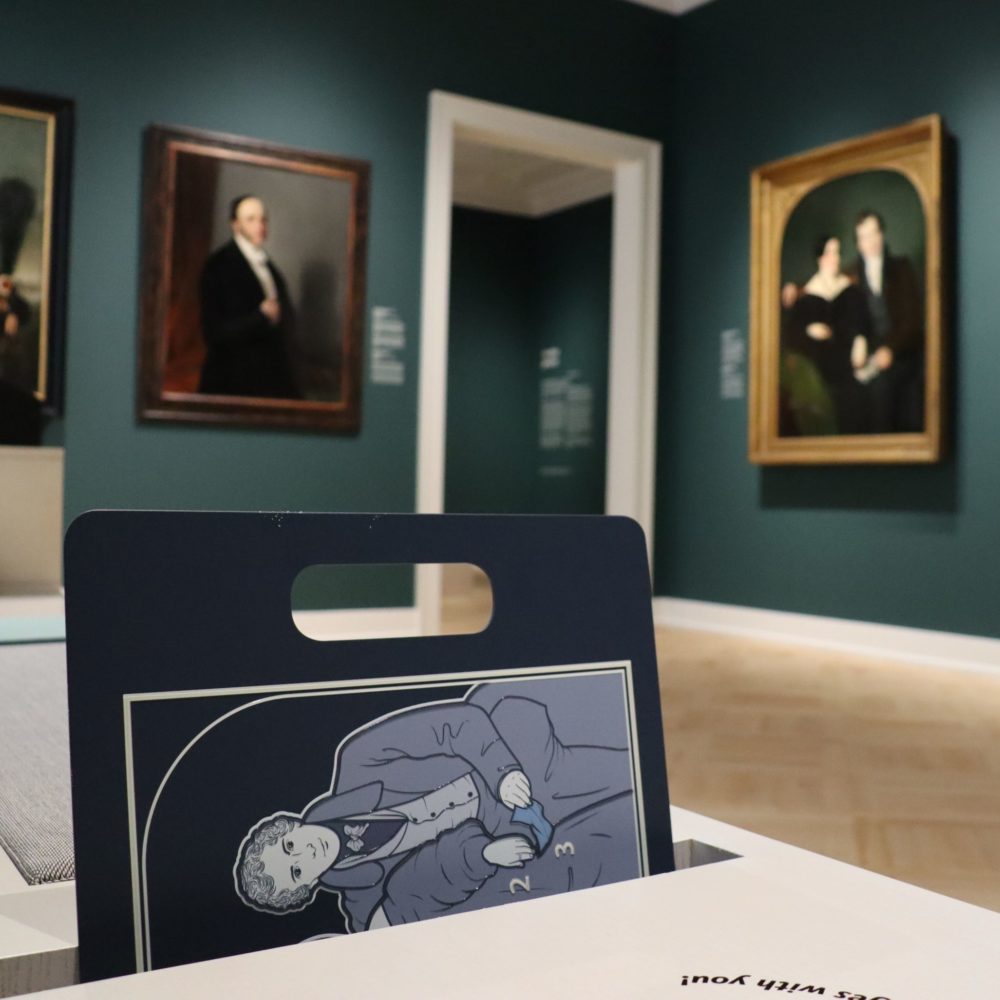
Finally, two tactile panels composed of transcriptions of painting in relief are open to visitors. They can on one side touch the entire painting and understand the most important details thanks to tactile drawings located on the reverse side of the panels.
A co-creative approach with the museum team
We worked hand in hand with the institution, throughout all the stages of design, creation and production of the different tactile stations and orientation maps.
1. The first stage consisted of sensitising the museum team to inclusive design and understanding visitors’ needs. We then chose together the relevant topics for mediation, meeting the needs of all: people with visual impairment, children, families, people with reduced mobility and others.
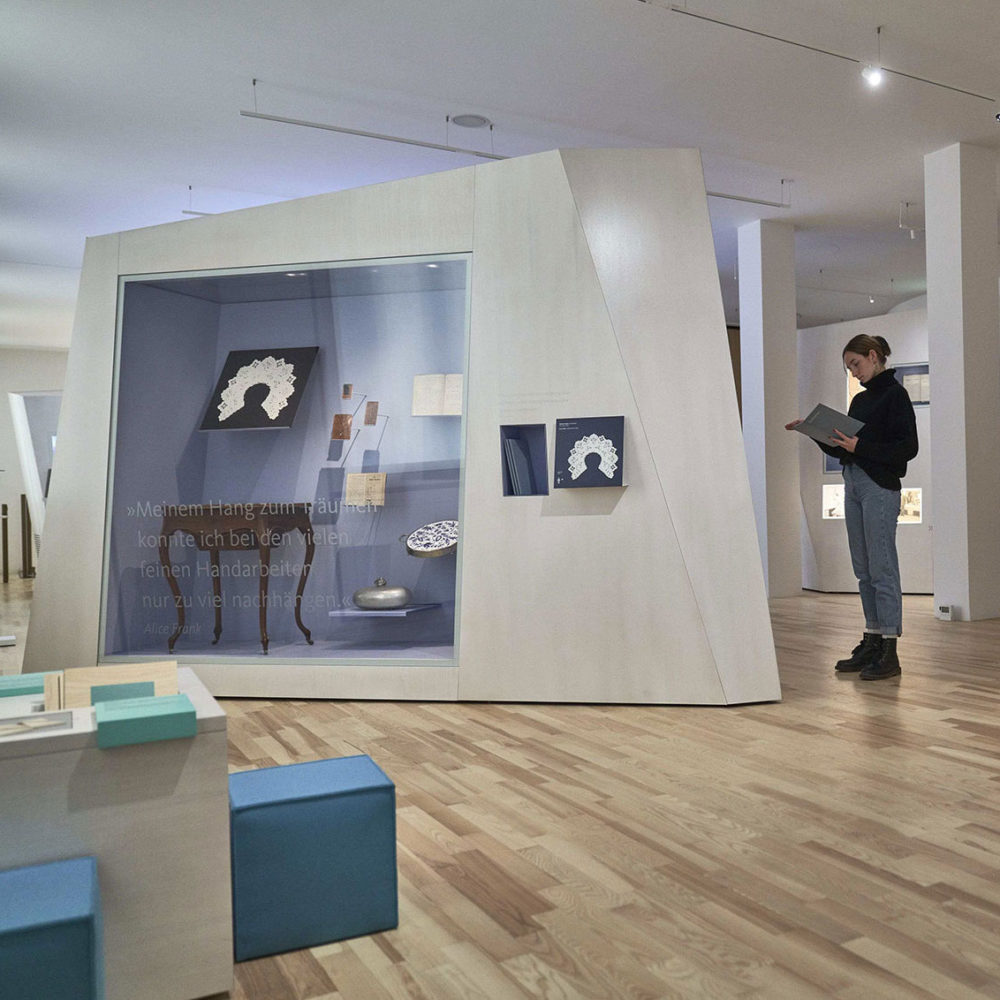
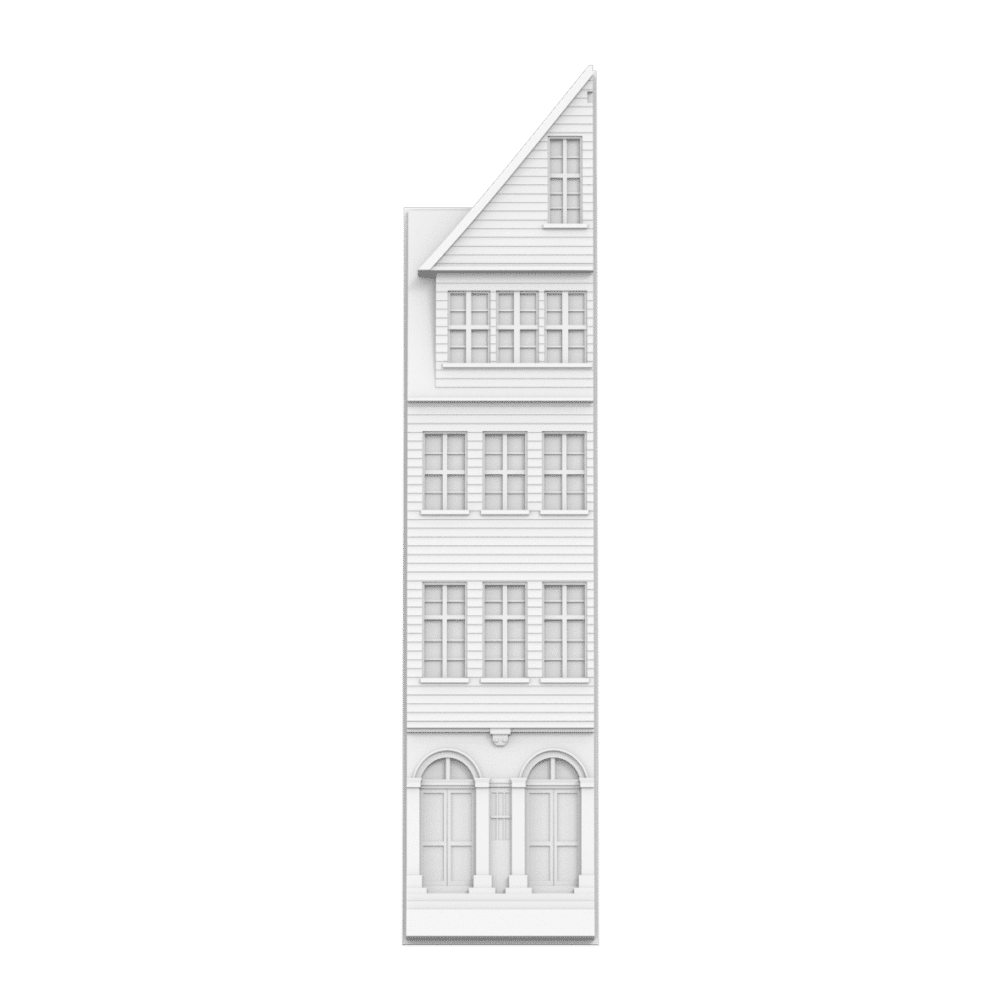
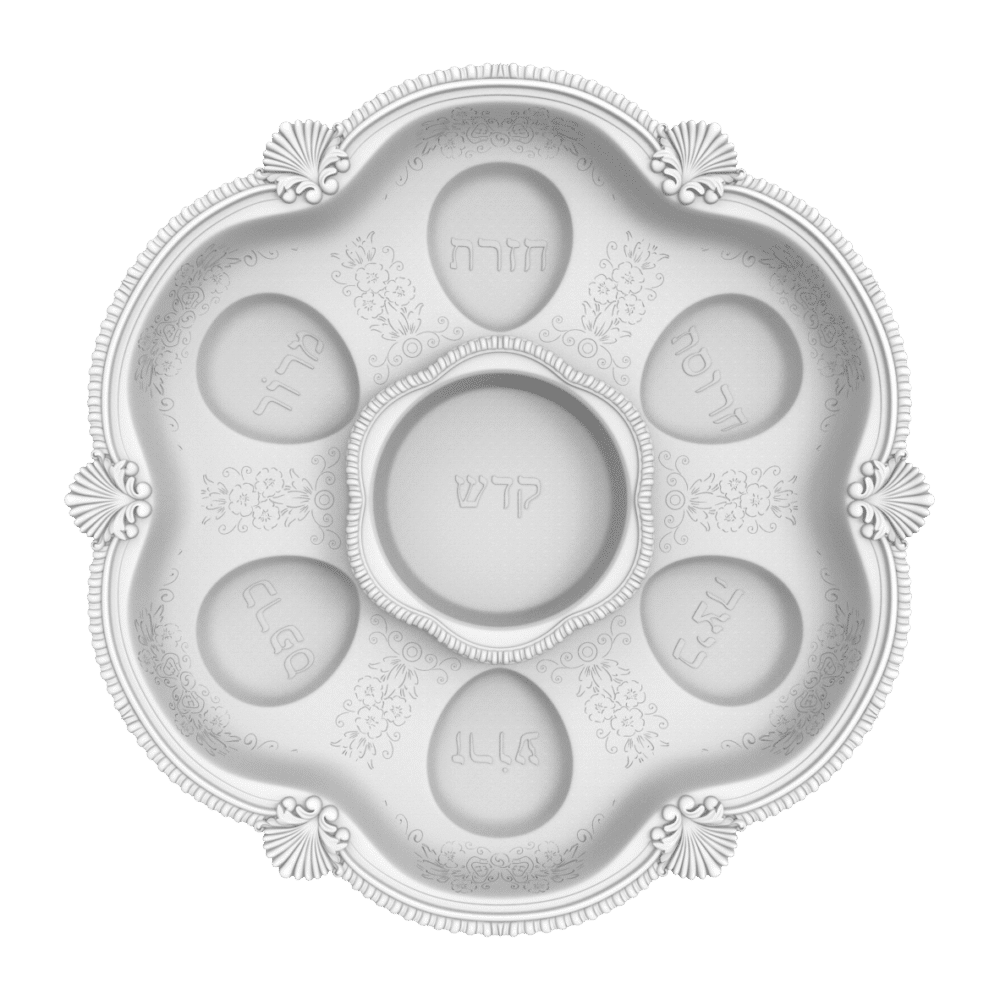
2. The second stage consisted of analysing the storyline of the exhibition in order to design-in its inclusiveness. Our aim was to create a narrative thread that is strong, intuitive and readable by all.
We therefore structured the inclusive stations in the same way, so that they could be recognised and understood readily by all visitors.
They are all designed with intuitive symbols, with identical blue backgrounds and all the important details presented in a lighter blue.
All the stations have Braille, contrasting text and tactile references, enabling an appreciation of the real dimensions of the objects.
The tactile stations have been designed so that they integrate perfectly with the design of the exhibition and with the narrative itinerary of the museum.
3. The third stage consisted of the production of the stations in our workshop – ensuring a high-quality finish – and their installation.
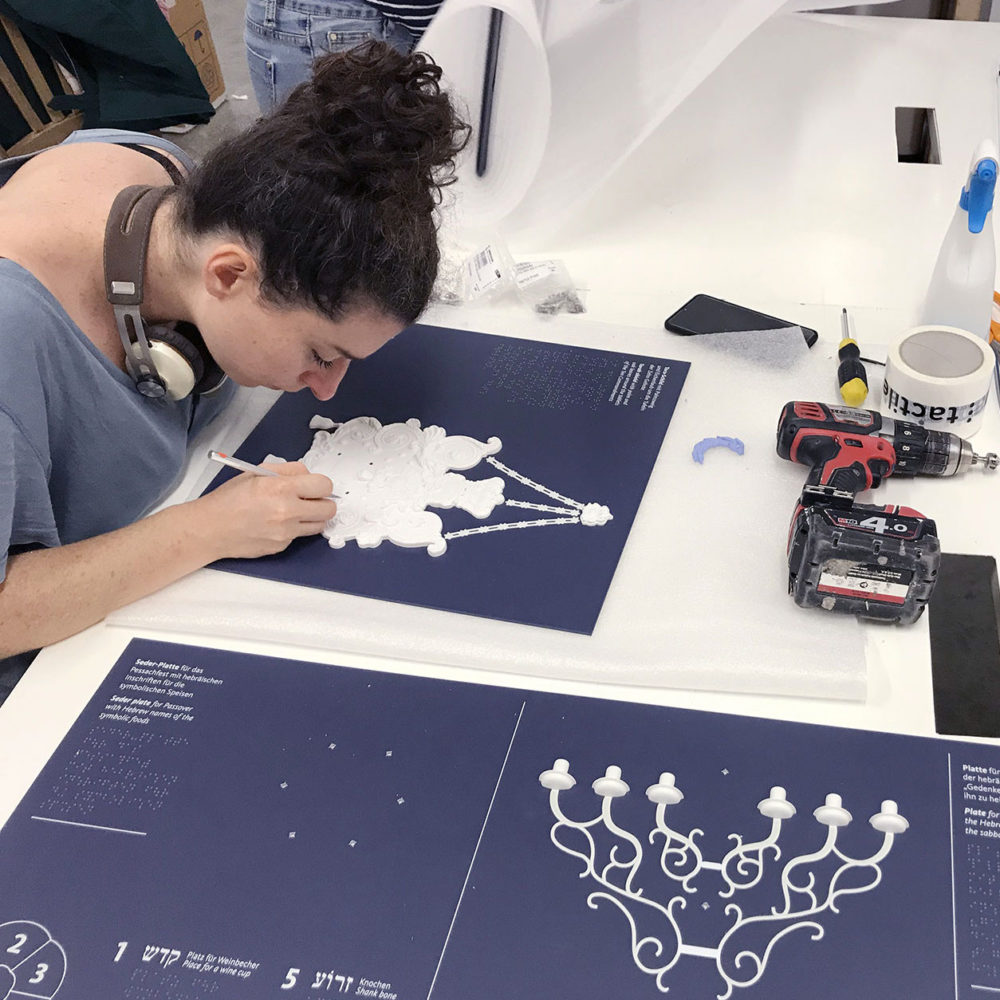
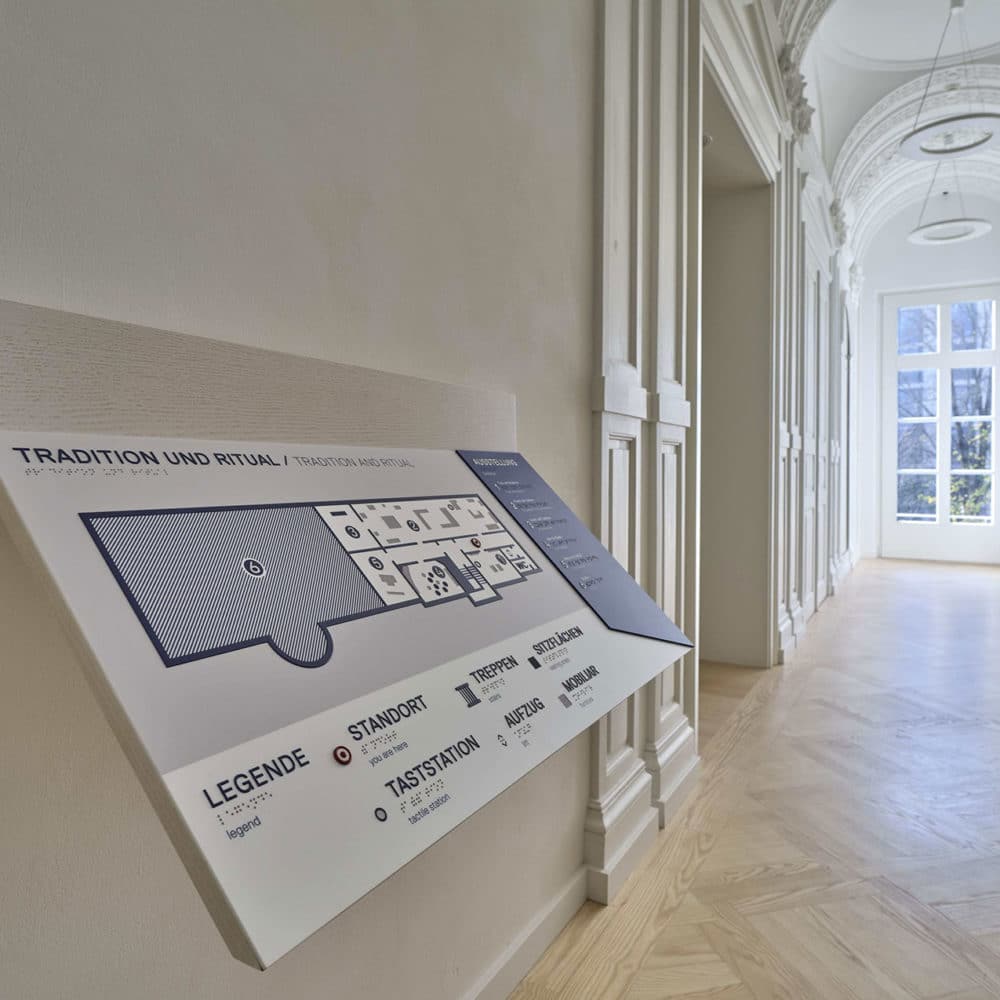
4. The fourth and final stage will consist of an evaluation of the project. We will soon receive feedback from visitors and the museum team which will allow all project participants to draw key findings for future projects.
To make the whole of the exhibition even more accessible, the museum got in touch with us again soon after it opened, to create a tactile orientation map helping visitors to understand the layout of the building and the complete storyline of the exhibition – as soon as they arrive!
Client: Jüdisches Museum Frankfurt
Partners: Atelier WAM / Empreinte / SPACE4
